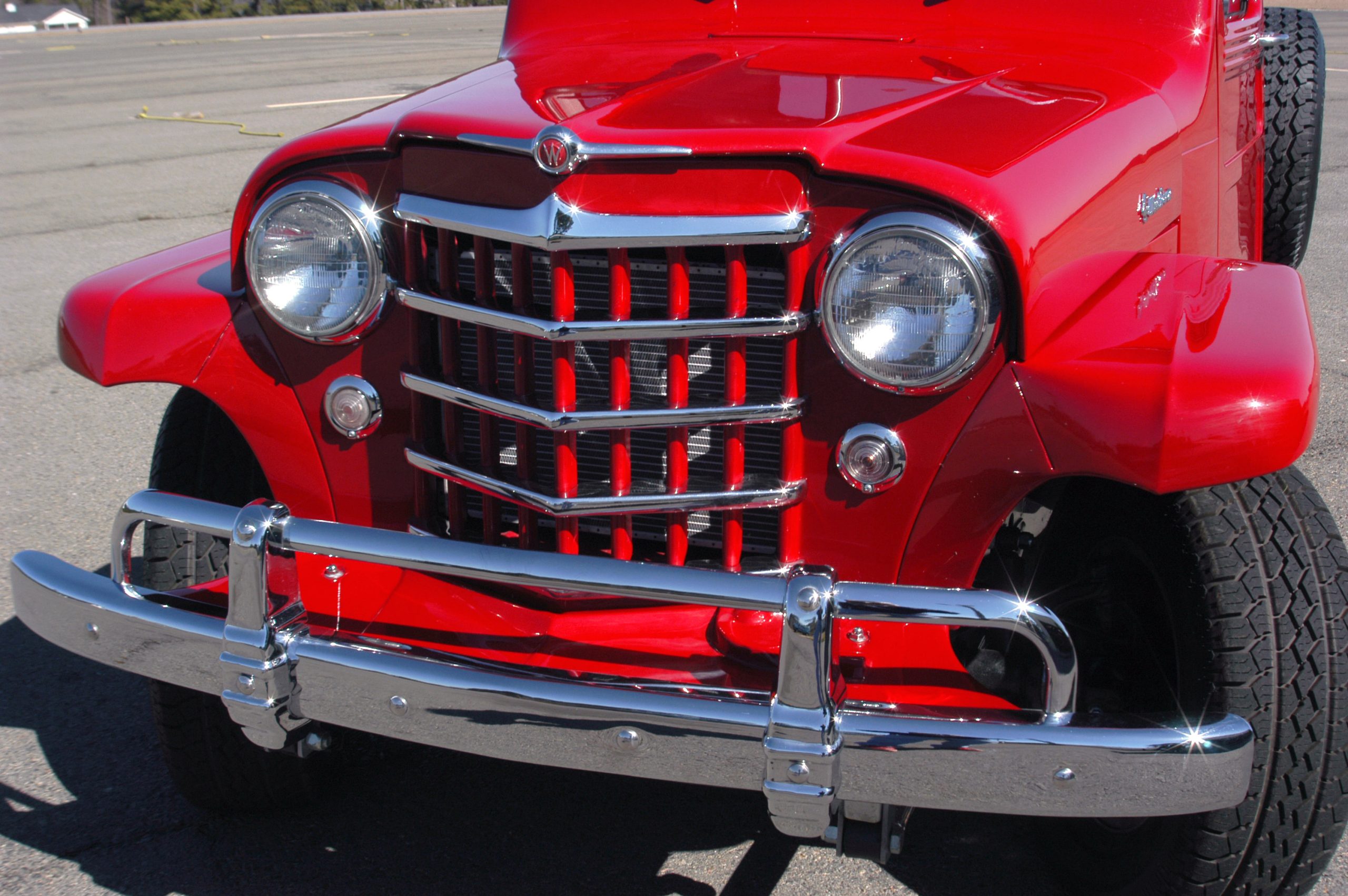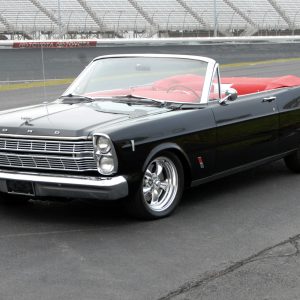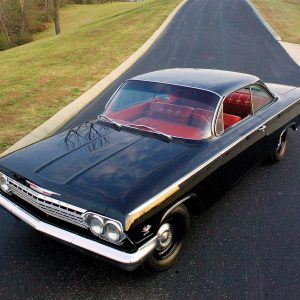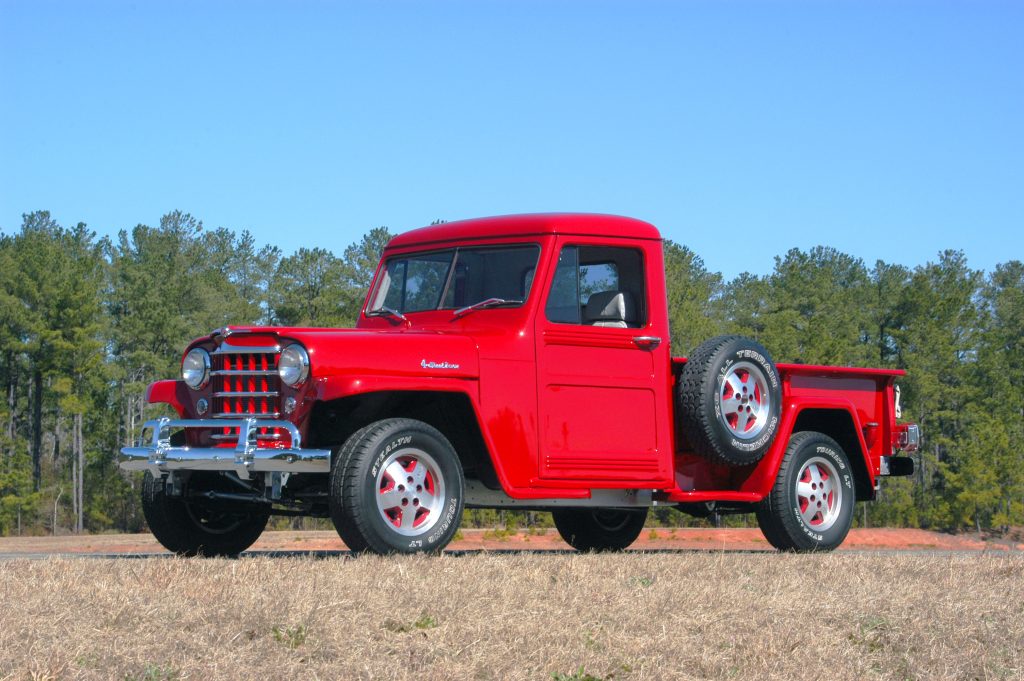


THE AUTO BUILDER
Featured
- All Post
- 20 High Priority - SR Super Rod
- Builds
- 25 High Priority - FB Ford Builder
- Cars
- 30 High Priority - AR American Rodder
- 01 Post Status
- 35 High Priority - RD Rodders Digest
- 40 High Priority - OTR On the Road
- 45 High Priority - SRB Street Rod Builder
- 50 High Priority - TB Truck Builder
- 55 High Priority - BSCENE Buckaroo Scene
- 60 High Priority - FPB Family Power Boat
- Trucks
- Swaps
- Performance Boats
- _000 Home Sliders
- Builders
- 00 Sidebars
- Manufacturers
- 05 High Priority - HCI Hot Compact Imports
- 05 Publications
- 10 High Priority - CR Chevy Rumble
- Back
- Chassis
- Engine
- Fuel System
- Electrical
- Exhaust
- Transmission / Drivetrain
- Suspension
- Steering
- Brakes
- Wheels and Tires
- Interior
- Exterior
- Accessories
- Power Adders
- Back
- Chassis
- Engine
- Fuel System
- Electrical
- Exhaust
- Transmission / Drivetrain
- Suspension
- Steering
- Brakes
- Wheels and Tires
- Interior
- Exterior
- Accessories
- Power Adders
- Back
- Chassis
- Engine
- Electrical
- Exhaust
- Fuel System
- Transmission / Drivetrain
- Suspension
- Steering
- Brakes
- Wheels and Tires
- Interior
- Exterior
- Accessories
- Power Adders
- Back
- Chassis
- Engine
- Electrical
- Exhaust
- Fuel System
- Transmission / Drivetrain
- Suspension
- Steering
- Brakes
- Wheels and Tires
- Interior
- Exterior
- Accessories
- Power Adders
- Back
- Chassis
- Engine
- Fuel System
- Electrical
- Exhaust
- Transmission / Drivetrain
- Suspension
- Steering
- Brakes
- Wheels and Tires
- Interior
- Exterior
- Accessories
- Power Adders
- Back
- Chassis
- Engine
- Fuel System
- Electrical
- Exhaust
- Transmission / Drivetrain
- Suspension
- Steering
- Brakes
- Wheels and Tires
- Interior
- Exterior
- Accessories
- Power Adders
- Back
- Chassis
- Engine
- Fuel System
- Electrical
- Exhaust
- Transmission / Drivetrain
- Suspension
- Steering
- Brakes
- Wheels and Tires
- Interior
- Exterior
- Accessories
- Power Adders
- Back
- Engine
- Fuel System
- Electrical
- Outdrives
- Steering
- Interior
- Accessories
- Power Adders
- Exterior and Hull
- Back
- Chassis
- Engine
- Electrical
- Exhaust
- Fuel System
- Transmission / Drivetrain
- Suspension
- Steering
- Brakes
- Wheels and Tires
- Interior
- Exterior
- Accessories
- Power Adders
- Back
- Chevrolet
- Cadillac
- Pontiac
- AMC
- Buick
- Jeep
- Lincoln
- Ford
- Honda
- GMC
- BMW
- Mitsubishi
- Dodge
- Nissan
- Chrysler
- Subaru
- Toyota
- Plymouth
- Mercury
- Volvo
- Volkswagen
- Oldsmobile
- Acura
- Back
- 05 Pub HCI Hot Compact Imports
- 15 Pub 4x4 4x4 Builder
- 20 Pub SR Super Rod
- 25 Pub FB Ford Builder
- 30 Pub AR American Rodder
- 35 Pub RD Rodders Digest
- 40 Pub OTR On the Road
- 55 Pub BSCENE Buckaroo Scene
- 10 Pub CR Chevy Rumble
- 50 Pub TB Truck Builder
- 60 Pub FPB Family Power Boat
- 45 Pub SRB Street Rod Builder
- Back
- Chip Foose
- Ring Brothers
- Jack Fuller
- Bob Cullipher
- Jerry Nichols
- Bobby Alloway
- Jesse James
- Carl Casper
- J.F. Launier
- Steve Sellers
- Boyd Coddington
- Rad Rides by Troy
- Cal Auto Creations
- George Barris
- West Coast Customs
- Back
- Street Rods
- Hot Rods
- Late Model
- Drag Race
- Handling
- Compact Cars
- Chassis
- Engine
- Fuel System
- Electrical
- Exhaust
- Transmission / Drivetrain
- Suspension
- Steering
- Brakes
- Wheels and Tires
- Interior
- Exterior
- Accessories
- Power Adders
- Chassis
- Engine
- Fuel System
- Electrical
- Exhaust
- Transmission / Drivetrain
- Suspension
- Steering
- Brakes
- Wheels and Tires
- Interior
- Exterior
- Accessories
- Power Adders
- Chassis
- Engine
- Electrical
- Exhaust
- Fuel System
- Transmission / Drivetrain
- Suspension
- Steering
- Brakes
- Wheels and Tires
- Interior
- Exterior
- Accessories
- Power Adders
- Chassis
- Engine
- Electrical
- Exhaust
- Fuel System
- Transmission / Drivetrain
- Suspension
- Steering
- Brakes
- Wheels and Tires
- Interior
- Exterior
- Accessories
- Power Adders
- Chassis
- Engine
- Electrical
- Exhaust
- Fuel System
- Transmission / Drivetrain
- Suspension
- Steering
- Brakes
- Wheels and Tires
- Interior
- Exterior
- Accessories
- Power Adders
- Chassis
- Engine
- Fuel System
- Electrical
- Exhaust
- Transmission / Drivetrain
- Suspension
- Steering
- Brakes
- Wheels and Tires
- Interior
- Exterior
- Accessories
- Power Adders
- Back
- 05 Post Imported
- 20 Post Missing Images (All)
- 25 Post Missing Images (Partial)
- 15 Post In Progress
- 30 Post Internal Review
- 40 Post On Hold
- 50 Post Approved
- 10 Post Images Imported
- 17 Post Missing TXT Files
- 18 Post Missing PDF Files
- 27 Post Missing Content
- Back
- Chassis
- Engine Swaps
- Interior Swaps
- Driveline
- Back
- Street Trucks
- OffRoad Trucks
- Chassis
- Engine
- Fuel System
- Electrical
- Exhaust
- Transmission / Drivetrain
- Suspension
- Steering
- Brakes
- Wheels and Tires
- Interior
- Exterior
- Accessories
- Power Adders
- Chassis
- Engine
- Fuel System
- Electrical
- Exhaust
- Transmission / Drivetrain
- Suspension
- Steering
- Brakes
- Wheels and Tires
- Interior
- Exterior
- Accessories
- Power Adders
- Back
- 01 Sidebar Left
- 01 Sidebar Right
Spotlighter
POPULAR READS
CLASSIC RECONSTRUCTION
Turning A ’52 4x4 Jeep Overland Into A Slightly Disguised Jeep Cherokee
Author

Garry McWhirter
Photography by Garry McWhirter & Kinney Lazarus
The Heart of Our 4X4 Heritage
This is the very heart of what we do, and this is where that heart began pumping for real-world 4×4 users. It’s not that the Willys Overland pictured here was the first, but it was one of the family of available models that took our forefathers out to the hinterland so they could get their jobs done and the farm chores handled. In those days, there were a lot of non-paved roads where these vehicles shone.
Early Beginnings of Willys-Overland
Actually, the story begins just a little earlier than this ’48 pickup. John North Willys bought the Overland Automotive Division of Standard Wheel Company back in 1908. By 1912, he renamed the company Willys-Overland Motor Company. The company filed bankruptcy during the Depression and reorganized again in 1936 as Willys-Overland Motors Inc. Throughout all those years, Willys-Overland manufactured both automobiles and trucks under the Willys nameplate.
Iconic Willys Cars
During the late ’30s and early ’40s, Willys produced cars that would later become icons of both the drag racing and hot rodding worlds, as the early ’30s Willys and ’40-’41 Willys rocked the drag racing world in the late ’50s and throughout most of the ’60s.
The Birth of the Jeep
After the outbreak of WWII, Willys-Overland, Bantam Car Company, and Ford Motor Company combined efforts to produce a vehicle for the U.S. Army that would become known as the Jeep. The basic design was from Bantam, but the drivetrain was based around the Willys four-cylinder flat-head engine, known as the “Go Devil.” Since Bantam did not have mass production facilities, Willys was awarded the contract to produce the Jeep with the Willys name attached to it. Ford was also awarded a production contract but was not allowed to put its name on the vehicle. To say the production of the Jeep was a success would be an obvious understatement. Willys produced 360,000 of the more than half million made between the years of 1941 and 1945.
Post-War Civilian Jeeps
When the war ended, Willys filed for a trademark registration of the Jeep name and continued production of the vehicle for civilian use. The civilian version was produced with the moniker “Civilian Jeep” and designated “CJ” within the company. Using many influences from the CJ, Willys-Overland once again ventured into the car and truck market, producing both pickups and station wagons for the automotive market, all under the name of Willys. The post-war products differed from the pre-war vehicles. Willys relied greatly on the tough, utilitarian image of the Jeep for its image, and the vehicles lived up to those expectations for the most part. The first production vehicle was the Willys wagon–the forerunner to today’s popular SUV. A pickup truck soon followed.
The Willys Pickup: 1947-1965
The Willys pickup was manufactured from 1947 through 1965 in both two-wheel drive and four-wheel drive. Over those many years, there were very few styling changes. In fact, many components of the pickup are interchangeable for all model years. Kaiser bought Willys-Overland Motors in 1953 but continued the Willys line of trucks until 1963, when the name was changed to Kaiser-Jeep and U.S. production ceased. Willys production continued for two more years in Brazil, Argentina, Israel, India, and Japan.
Kinney Lazarus and His Vintage Willys Pickup
Kinney Lazarus has owned several Jeeps over the years, and he had an interest in owning one of these vintage Willys pickups. While searching the Internet one day, he came across a running ’52 Willys 4WD pickup in Arkansas. He purchased the pickup online and had it shipped to his home in Georgia. Once he had possession of the truck, he quickly found that the performance of the original flathead four-cylinder engine left a lot to be desired by today’s standards. Also, being accustomed to a more modern ride, he found that the outdated suspension was less than desirable.
Deciding to Update the Drivetrain
In general, this classic Jeep was no fun to drive. Lazarus decided to do something about it, realizing that all this pickup needed was an update to a more modern drivetrain. After some searching for the right individual to perform the work, Lazarus’ brother-in-law, Dean Robbins, suggested he contact a friend. Howard Doyal owns Auto Paint Center in Leesburg, Georgia. He runs the paint shop full time and performs custom work for selected individuals in his spare time. Lazarus and Doyal met to discuss the Willys pickup project. Doyal’s one-man operation accepted the project, and work began shortly thereafter.
Transformation into a 1994 Jeep Cherokee
Instead of dropping a later-model V-8 into the ’52, which has been the common practice among Jeep enthusiasts (along with upgrading the front and rear axles), these two decided to take an entirely different approach. Because the Willys is and was an integral part of the Jeep family, both Lazarus and Doyal agreed that the pickup should remain all Jeep. They located a wrecked 1994 Jeep Cherokee with fairly low mileage and proceeded to turn the ’52 Willys pickup into a slightly disguised ’94 Cherokee.
Disassembly and Parts Inventory
The first step was to completely disassemble both vehicles in order to decide which parts could and would be used and which ones would be discarded. After taking inventory of all the available parts, the original frame and body components of the ’52 were retained, along with the drivetrain, suspension pieces, and most of the ’94 Cherokee interior.
Adaptation and Installation
Howard Doyal adapted the complete front and rear suspension of the Cherokee, including the later-model parallel leaf springs, narrowed to fit the original ’52 frame. He then dropped both the 4-liter straight-six-cylinder engine and automatic transmission into the chassis. The longer wheelbase of the pickup required that new driveshafts be made. Other additions included the later-model gas tank required for the fuel-injected engine. Once all the components were fitted and in place, the chassis received a coat of silver paint. The classic-looking Willys now had modern steering, suspension, and drivetrain.
Bodywork and Painting
The original body components and panels were in pretty good shape to begin the project. Doyal performed minimal repair work and smoothed them all for painting. The only modification to the body was the addition of a third brake light flush mounted above the rear window for safety. Doyal applied the PPG basecoat/clearcoat Nissan 300Z red paint. The results were outstanding, with red being the perfect color for the pickup. All the original emblems and chrome trim were retained. Lazarus decided to use a set of original Cherokee aluminum wheels to complete the exterior package, as well as retain the 100-percent Jeep heritage.
Interior Upgrades
Inside, Doyal built a new dash to accept the Cherokee dash panel and gauges. He also installed the Cherokee steering column. The ’94 console was trimmed to fit between the Cherokee bucket seats. Even the Cherokee overhead console, air conditioning, power windows, radio, and armrests found their way into the Willys. Dixie Rod & Custom Upholstery in Albany, Georgia, covered the seats with grey ultra-leather with matching wool carpet throughout the passenger compartment. Lazarus added the original Willys horn button to the Cherokee steering wheel to acknowledge the heritage of the truck.
Successful Transformation
Lazarus made the initial trip in his “new” Willys by driving it back home to Milledgeville. The 150-mile trip was full of smiles and the deep satisfaction of knowing this was one project that proved to be the right move, with all the right decisions. Since that time, he has driven the pickup regularly to and from his job as airport manager. It is hard to ignore the classic good looks of the original Willys-Overland pickup, as it is a staple among 4x4s. With the modern drivetrain and suspension from the ’94 Cherokee installed, it now makes a reliable and much more comfortable Jeep to drive on a daily basis.
THE ART OF RECREATION, BUT WITH A TWIST
Turning an old Willys Jeep Overland into something more durable takes planning, work and a donor vehicle. That’s especially true if you wish to keep the reconstruction 100 percent within the Jeep family, as Kinney Lazarus did. He transformed his ’52 4×4 Jeep Overland into a slightly disguised Jeep Cherokee, and here are the highlights of how it was done.















